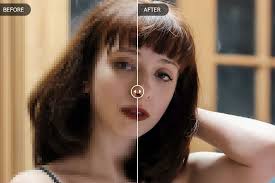
Pixelation can ruin the quality and aesthetic appeal of your images, but thankfully, modern technology offers numerous tools and techniques to restore clarity. Whether you’re dealing with old photos, low-resolution images, or enlarged graphics, this guide will help you depixelate your images and enhance their quality effectively.
Understanding Pixelation: Causes and Effects
Pixelation occurs when an image is resized beyond its original resolution, causing individual pixels to become visible. This often results in a blurry or blocky appearance, especially in low-resolution images. It can happen due to:
- Enlarging images beyond their natural resolution.
- Saving images in low-quality formats.
- Frequent compression and decompression.
Restoring these images involves using advanced tools to smooth pixelated areas and sharpen the overall image.
Top Methods to Depixelate Images
1. Online AI Tools for Image Enhancement
AI-powered tools have revolutionized image editing by making depixelation quick and efficient. These platforms use deep learning algorithms to enhance image details while reducing pixelation.
VanceAI
- Features: AI-driven enhancement, batch processing, and simple interface.
- Steps:
- Upload your pixelated image on the VanceAI website.
- Select the enhancement settings (up to 2x for free users; higher resolutions require a subscription).
- Click “Start” to begin the enhancement process and download the improved image.
Other Notable AI Tools:
- Let’s Enhance: Specializes in upscaling and reducing noise.
- Pixlr: Offers a free and user-friendly interface for quick fixes.
2. Software Solutions for Professionals
Adobe Photoshop
Photoshop remains a leading tool for image editing and depixelation. While it requires some expertise, it provides unmatched flexibility.
- Steps:
- Open the image in Photoshop.
- Navigate to Filter > Sharpen > Unsharp Mask to reduce pixelation.
- Adjust the sliders to balance sharpness and clarity.
- For advanced results, use layers and blending modes (e.g., “Soft Light”) and apply smoothing filters like Despeckle.
Fotophire Maximizer
- Features: Allows upscaling by up to 1000% while maintaining quality.
- Steps:
- Download and install Fotophire Maximizer.
- Open your image and use the enhancement tools to adjust dimensions and sharpness.
- Save the edited image for improved results.
GIMP
A free alternative to Photoshop, GIMP provides robust tools for depixelation.
- Use the Despeckle filter under Filters > Enhance.
- Adjust sliders to reduce pixelation and increase clarity.
3. Mobile Apps for On-the-Go Editing
For quick fixes on your smartphone, third-party apps offer reliable solutions.
Photoshop Express
- Downloadable from app stores, it provides easy-to-use sliders for improving image quality.
- Steps:
- Upload your pixelated image.
- Use enhancement sliders for clarity and sharpness.
- Save the image to your gallery.
Other Apps:
- Remini: Ideal for restoring old and blurry photos.
- Photo Enhancer AI: Provides AI-driven clarity restoration.
Best Practices for Pixelation
- Choose the Right Tool: Use AI tools for speed and convenience, while relying on software like Photoshop for advanced editing.
- Start with High-Quality Images: Avoid compressing images repeatedly to maintain quality.
- Test Various Filters: Different tools may yield varying results, so experiment to find the best fit for your image.
- Save Edited Files in High-Resolution Formats: Use formats like PNG or TIFF to retain quality.
When to Use Pixelation
- Old Photos: Restore sentimental images to their original clarity.
- Marketing Materials: Enhance graphics for professional presentations.
- Social Media: Ensure your images look sharp and appealing.
Final Thoughts
Depixelating an image can breathe new life into your photos, whether for personal or professional use. By using the methods and tools outlined in this guide, you can effectively eliminate pixelation and restore your images to their original quality.